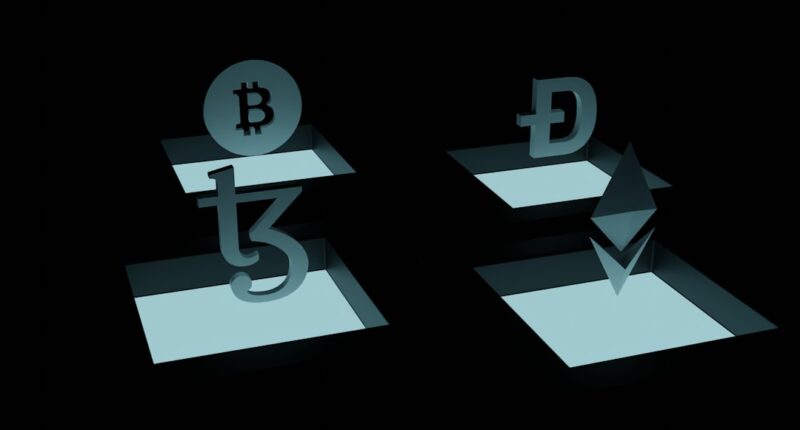Ethereum Classic (ETC) is a decentralized, open-source blockchain platform that was created as a result of a split from the original Ethereum network. The split occurred in 2016 after a controversial hard fork was implemented to reverse the effects of a major hack on the DAO (Decentralized Autonomous Organization). Those who disagreed with the decision to reverse the hack and believed in the immutability of the blockchain continued to support the original Ethereum chain, which became known as Ethereum Classic.
The philosophy behind Ethereum Classic is rooted in the principles of decentralization, immutability, and censorship resistance. The community believes that blockchain transactions should be irreversible and that code is law. They argue that by reversing the DAO hack, Ethereum compromised these principles and set a dangerous precedent for future interventions. Ethereum Classic aims to preserve the original vision of Ethereum and provide a platform for developers to build decentralized applications (dApps) without interference or censorship.
Key Takeaways
- Ethereum Classic is a decentralized blockchain platform that operates on the principles of transparency and immutability.
- The Ethereum Classic Explorer is a tool that allows users to view and track transactions on the Ethereum Classic blockchain.
- Navigating the Ethereum Classic blockchain involves understanding the structure of blocks, transactions, and addresses.
- Analyzing Ethereum Classic transactions can provide insights into the flow of funds and the behavior of network participants.
- Exploring Ethereum Classic contracts can reveal the functionality and security of smart contracts deployed on the platform.
Understanding the Ethereum Classic Explorer
An explorer is a tool that allows users to view and interact with a blockchain network. It provides a user-friendly interface to navigate through the blockchain, view transactions, blocks, and addresses, and explore various data related to the network. The Ethereum Classic explorer is specifically designed for the ETC blockchain and provides users with a comprehensive view of the network’s activity.
The Ethereum Classic explorer allows users to search for specific transactions or blocks by entering relevant information such as transaction hash or block number. It provides detailed information about each transaction, including sender and recipient addresses, transaction value, gas used, and transaction status. Users can also explore individual blocks to see all the transactions included in that block.
To use the Ethereum Classic explorer, simply enter the desired transaction hash or block number in the search bar and click on the search button. The explorer will display all relevant information related to that transaction or block. Users can also filter transactions based on specific criteria such as gas used, transaction status, or time of execution.
Navigating the Ethereum Classic Blockchain
The blockchain is a decentralized ledger that records all transactions and data on a network. It consists of a series of blocks, each containing a list of transactions. The Ethereum Classic blockchain is no different and can be navigated using various tools and techniques.
To navigate the Ethereum Classic blockchain, users can use the explorer mentioned earlier or connect to a node. A node is a computer that participates in the network by maintaining a copy of the entire blockchain and validating transactions. By connecting to a node, users can access the blockchain directly and explore its contents.
Nodes play a crucial role in the Ethereum Classic network as they help maintain the integrity and security of the blockchain. They validate transactions, propagate them to other nodes, and participate in the consensus mechanism to reach agreement on the state of the network. By connecting to a node, users can navigate through the blockchain, view transactions, blocks, and addresses, and even interact with smart contracts.
Analyzing Ethereum Classic Transactions
| Metrics | Description |
|---|---|
| Transaction Volume | The total value of ETC transferred on the Ethereum Classic network. |
| Transaction Count | The total number of transactions processed on the Ethereum Classic network. |
| Average Gas Price | The average price of gas paid by users to execute transactions on the Ethereum Classic network. |
| Gas Limit | The maximum amount of gas that can be used to execute a transaction on the Ethereum Classic network. |
| Block Time | The average time it takes to mine a new block on the Ethereum Classic network. |
| Hash Rate | The total computational power being used to mine blocks on the Ethereum Classic network. |
Transactions are the building blocks of any blockchain network. They represent the transfer of value from one address to another and contain important information such as sender and recipient addresses, transaction value, gas used, and transaction status.
To analyze Ethereum Classic transactions, users can use the explorer or connect to a node. The explorer provides a user-friendly interface to view individual transactions and their details. Users can search for specific transactions using their hash or explore recent transactions using filters such as gas used or transaction status.
Gas is an essential concept in Ethereum Classic transactions. It represents the computational effort required to execute a transaction or run a smart contract. Gas fees are paid by users to incentivize miners to include their transactions in blocks. The higher the gas fee, the more likely it is that miners will prioritize that transaction.
By analyzing gas fees and gas usage in Ethereum Classic transactions, users can gain insights into the network’s activity and congestion levels. High gas fees and gas usage may indicate increased demand for network resources, while low gas fees and gas usage may suggest a less congested network.
Exploring Ethereum Classic Contracts
Smart contracts are self-executing contracts with the terms of the agreement directly written into code. They automatically execute when certain conditions are met and eliminate the need for intermediaries or third parties. Ethereum Classic, like Ethereum, is known for its robust smart contract capabilities.
To explore Ethereum Classic contracts, users can again use the explorer or connect to a node. The explorer provides a user-friendly interface to search for specific contracts and view their details. Users can search for contracts using their address or explore popular contracts using filters such as contract type or activity.
Examples of popular Ethereum Classic contracts include decentralized exchanges (DEXs), decentralized finance (DeFi) protocols, and gaming platforms. These contracts enable users to trade assets, lend and borrow funds, and participate in various decentralized applications (dApps) on the Ethereum Classic network.
By exploring Ethereum Classic contracts, users can gain insights into the types of applications being built on the platform and the level of adoption of these applications. They can also analyze contract activity, such as the number of transactions or the amount of value locked in a contract, to assess its popularity and success.
Ethereum Classic Mining and Rewards

Mining is the process by which new blocks are added to the blockchain and transactions are validated. Miners use computational power to solve complex mathematical problems, and when they find a solution, they are rewarded with newly minted coins and transaction fees.
To mine Ethereum Classic, users need specialized hardware called mining rigs that are capable of performing the necessary computations. They also need to join a mining pool or operate as a solo miner. Mining pools allow miners to combine their computational power and increase their chances of finding a block, but they also share the rewards among all participants.
The rewards for mining Ethereum Classic consist of newly minted ETC coins and transaction fees. The block reward is currently set at 3.2 ETC, and it is halved approximately every five million blocks. Transaction fees are paid by users to incentivize miners to include their transactions in blocks. The higher the gas fee, the more likely it is that miners will prioritize that transaction.
Mining Ethereum Classic can be a profitable venture, but it requires significant investment in hardware and electricity costs. It also requires technical knowledge and expertise to set up and maintain mining rigs. As the network becomes more competitive, it becomes harder to mine new blocks and earn rewards.
Ethereum Classic vs Ethereum: What’s the Difference?
Ethereum Classic and Ethereum share a common history but have diverged in terms of philosophy, technology, and community. While both platforms are based on the same underlying technology and have similar features, there are some key differences that set them apart.
One of the main differences between Ethereum Classic and Ethereum is their approach to immutability. Ethereum Classic believes in the immutability of the blockchain and argues that transactions should be irreversible. This philosophy is rooted in the belief that code is law and that blockchain transactions should be free from censorship or interference.
On the other hand, Ethereum took a different approach when it reversed the effects of the DAO hack through a controversial hard fork. This decision was made to recover funds for investors who lost money in the hack but was seen by some as a violation of the principles of decentralization and immutability.
Another difference between Ethereum Classic and Ethereum is their community and development efforts. Ethereum has a larger and more active community, with a strong focus on innovation and scalability. It has attracted many developers and projects that are building decentralized applications (dApps) on its platform.
Ethereum Classic, on the other hand, has a smaller and more focused community that is committed to preserving the original vision of Ethereum. It has a strong emphasis on decentralization and immutability and aims to provide a platform for developers who share these values.
Ethereum Classic Community and Development
The Ethereum Classic community is made up of developers, miners, investors, and enthusiasts who are passionate about the principles of decentralization, immutability, and censorship resistance. They believe in the power of blockchain technology to create a more transparent and equitable world.
The community is actively involved in the development of the Ethereum Classic platform. They contribute to the codebase, propose and vote on protocol upgrades, and build decentralized applications (dApps) on the network. The community also organizes events, meetups, and conferences to promote awareness and adoption of Ethereum Classic.
Getting involved in the Ethereum Classic community is relatively easy. Users can join online forums and social media groups to connect with like-minded individuals and stay updated on the latest news and developments. They can also contribute to the codebase or participate in community governance by voting on proposals or running for positions in the community.
Recent Ethereum Classic News and Updates
The Ethereum Classic community has been actively working on various initiatives to improve the platform’s scalability, security, and usability. Recent news and updates include:
1. The Thanos hard fork: In November 2020, Ethereum Classic implemented the Thanos hard fork to improve its mining algorithm and make it more resistant to ASIC mining. The fork also reduced the block reward from 4 ETC to 3.2 ETC.
2. The ECIP-1100 proposal: ECIP-1100 is a proposal to introduce a new monetary policy for Ethereum Classic that would cap the total supply of ETC at 230 million coins. This proposal aims to address concerns about inflation and provide a predictable supply schedule for investors.
3. The Emerald Wallet: The Emerald Wallet is a user-friendly wallet for Ethereum Classic that provides a secure and convenient way to store, send, and receive ETC. It also allows users to interact with smart contracts and explore the Ethereum Classic blockchain.
These recent developments demonstrate the ongoing commitment of the Ethereum Classic community to improve the platform and provide a robust and secure environment for developers and users.
The Future of Ethereum Classic
In conclusion, Ethereum Classic is a decentralized blockchain platform that aims to preserve the principles of decentralization, immutability, and censorship resistance. It provides a platform for developers to build decentralized applications (dApps) without interference or censorship.
The Ethereum Classic explorer is a powerful tool that allows users to view and interact with the Ethereum Classic blockchain. It provides a user-friendly interface to navigate through the blockchain, view transactions and blocks, and explore various data related to the network.
By analyzing Ethereum Classic transactions and exploring contracts, users can gain insights into the network’s activity, popularity, and adoption. They can also participate in mining to earn rewards and contribute to the security and integrity of the blockchain.
The future of Ethereum Classic looks promising as the community continues to work on improving the platform’s scalability, security, and usability. With a strong focus on decentralization and immutability, Ethereum Classic has the potential to attract developers and users who share these values and create a more transparent and equitable world.
If you’re interested in learning more about Ethereum Classic and its blockchain explorer, you might find this article on eth-news.com quite informative. Titled “Hello World: Exploring the Ethereum Classic Blockchain,” it delves into the intricacies of Ethereum Classic’s blockchain technology and how its explorer plays a crucial role in navigating and understanding the network. To read the full article, click here.
FAQs
What is Ethereum Classic Explorer?
Ethereum Classic Explorer is a blockchain explorer that allows users to view and search the Ethereum Classic blockchain. It provides information about transactions, blocks, addresses, and other data related to the Ethereum Classic network.
What is Ethereum Classic?
Ethereum Classic is a decentralized blockchain platform that was created as a result of a hard fork from the original Ethereum network in 2016. It is a continuation of the original Ethereum blockchain, which was created to maintain the principles of decentralization and immutability.
What can I do with Ethereum Classic Explorer?
With Ethereum Classic Explorer, you can view and search the Ethereum Classic blockchain to get information about transactions, blocks, addresses, and other data related to the network. You can also use it to track the progress of your own transactions and monitor the activity of other users on the network.
Is Ethereum Classic Explorer free to use?
Yes, Ethereum Classic Explorer is free to use. You can access it through any web browser without having to pay any fees or sign up for an account.
Is Ethereum Classic Explorer safe to use?
Ethereum Classic Explorer is generally considered safe to use. However, it is important to exercise caution when using any blockchain explorer, as there is always a risk of encountering malicious websites or phishing scams. To ensure your safety, always verify the URL of the website you are using and avoid clicking on any suspicious links or downloading any unknown files.






11 comments
I am extremely inspired together with your writing abilities as smartly as with the format in your blog. Is that this a paid theme or did you customize it your self? Either way keep up the nice quality writing, it’s uncommon to see a great weblog like this one these days!
Loved the breakdown! For those diving deeper into AI tools, check out AI Translation on tyy.AI – a great resource for finding top solutions across niches.
Your point of view caught my eye and was very interesting. Thanks. I have a question for you.
Interesting analysis! The shift towards seamless mobile experiences, like with the jlboss link app, is key. Secure verification & quick deposits (GCash!) really elevate user enjoyment – crucial for platforms like JL Boss 2025. Great points!
Thank you, your article surprised me, there is such an excellent point of view. Thank you for sharing, I learned a lot.
Can you be more specific about the content of your article? After reading it, I still have some doubts. Hope you can help me.
Your article helped me a lot, is there any more related content? Thanks!
I don’t think the title of your article matches the content lol. Just kidding, mainly because I had some doubts after reading the article.
Thanks for sharing. I read many of your blog posts, cool, your blog is very good. https://www.binance.com/join?ref=P9L9FQKY
Thank you for your sharing. I am worried that I lack creative ideas. It is your article that makes me full of hope. Thank you. But, I have a question, can you help me? binance
Thank you for your sharing. I am worried that I lack creative ideas. It is your article that makes me full of hope. Thank you. But, I have a question, can you help me?